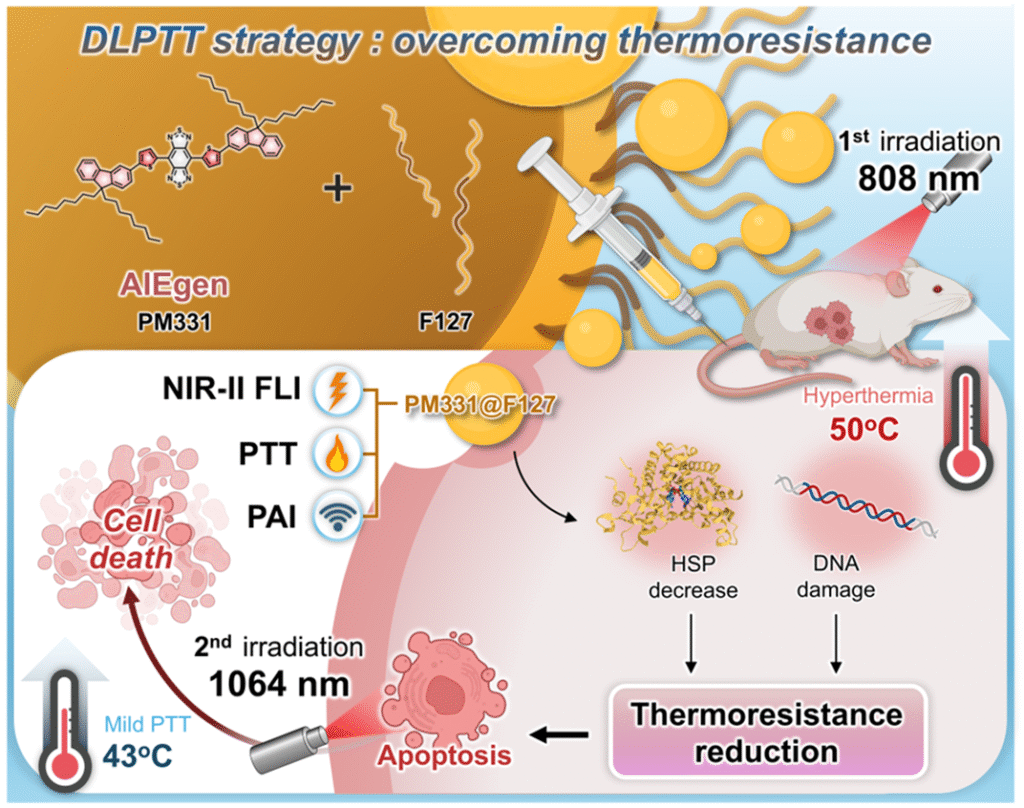A new dual-laser photothermal therapy (DLPTT) strategy is revolutionizing breast cancer treatment by enhancing tumor ablation while minimizing damage to healthy tissue. Developed by researchers from the Shenzhen Institutes of Advanced Technology and their collaborators, this approach uses near-infrared photothermal agents with aggregation-induced emission properties to precisely target cancer cells. The therapy operates in two stages: an initial short 808 nm laser irradiation weakens tumor resistance, followed by a longer 1,064 nm laser treatment that effectively eliminates residual cancer cells.
The DLPTT strategy integrates second near-infrared fluorescence imaging and photoacoustic imaging, allowing for deeper tissue penetration and clearer tumor localization. In preclinical trials using breast cancer mouse models, the therapy significantly inhibited tumor growth without notable side effects. Additionally, biosafety experiments confirmed low toxicity, as evidenced by stable body weights and minimal inflammatory cytokine production.
This breakthrough not only advances imaging-guided tumor phototherapy but also opens new avenues for integrating immunotherapy to combat metastasis and recurrence. Researchers believe that combining DLPTT with immunotherapy could provide a powerful solution for long-term cancer management.
Article from Chinese Academy of Sciences: Dual-laser Strategy Revolutionizes Breast Cancer Photothermal Therapy
Journal Abstract in PNAS: Dual-laser “808 and 1,064 nm” strategy that circumvents the Achilles’ heel of photothermal therapy

